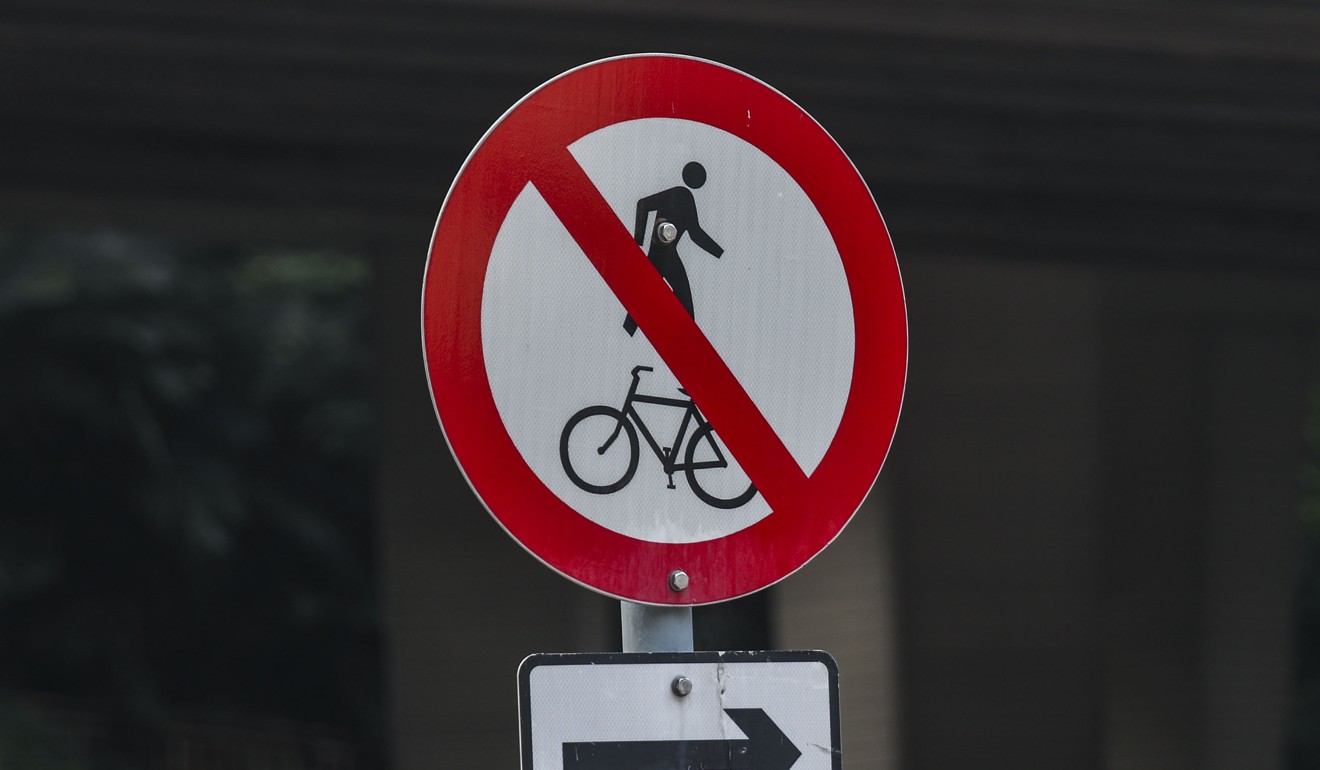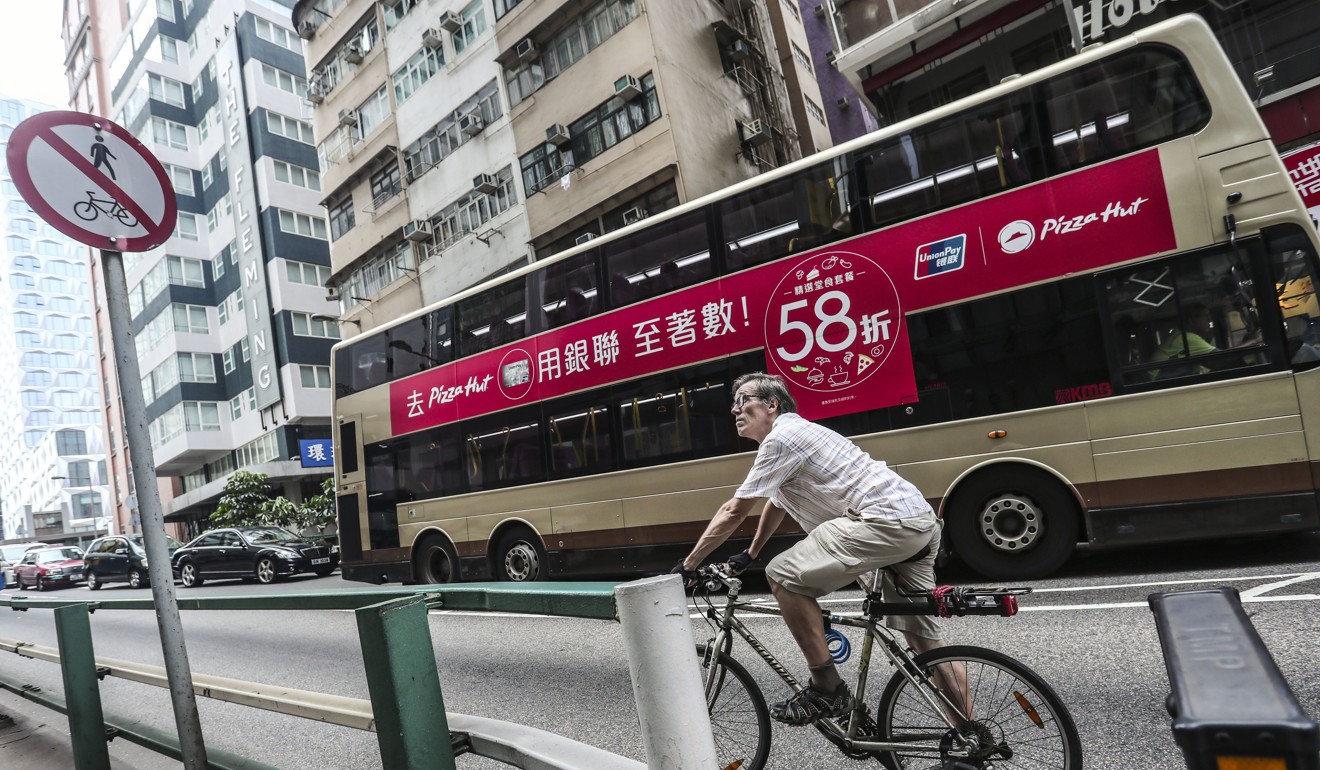
Bicycles still discouraged in Hong Kong urban areas due to ‘high traffic density’
Facing 340 prohibition zones, advocates argue the mode of transport should not be limited to new towns and other areas with cycle track networks
While being “bicycle-friendly” has been championed in Hong Kong’s new towns and other areas featuring comprehensive cycle track networks, officials have discouraged the mode of transport in urban parts of the city.
Current laws prohibit bicycle use on motorways and road tunnels, and in 2013 the Transport Department drafted internal guidelines on setting up zones where cycling is not permitted.

According to the rules obtained by the Post, officials cite a high traffic flow density on the city’s roads as their basis for discouraging the use of bicycles in urban areas, where cycling is instead promoted only as a recreational activity.
But the guidelines make clear bicycle prohibition zones should be set up with care, noting “cyclists do have the right to ride on public carriageways”.
Cycling ban at 16 spots across Hong Kong set to be lifted in months
The rules set forth some requirements for bicycle prohibition zones, such as avoiding putting cyclist safety in serious jeopardy and making a convenient alternative route available.
Hong Kong has 340 bicycle prohibition zones. Cycling is also banned on road sections where an adjacent cycle track is designated.

Local cycling groups have clashed with transport officials in recent years, challenging why certain areas have been selected for prohibition zones.
In July 2014, Esther Fung Yuk-ki, a member of the Hong Kong Cycling Association’s youth squad, was fined HK$300 (US$38) for not using a designated cycle path during a practice session along Ting Kok Road in Tai Po the previous year.
Fung, then 17 and an up-and-coming star, withdrew from the team to prepare for public examinations.
At the time, the association lashed out at the government’s cycling rules, saying they threatened their youth training programmes and that it was unrealistic to confine speed training to tracks.。
Unlike Hong Kong, most overseas cities and countries neither restrict cycling activities to roads nor impose prohibition zones.
‘Crackdown on reckless cyclists ridiculous, educate Hong Kong car drivers’
According to Britain’s Department of Transport in 2012, a road network is the most basic and important cycling facility available.
“In general, cyclists need only be removed from the road where there is an overriding safety requirement that cannot be met by on-carriageway improvements,” the authority stated.

Hong Kong Cycling Alliance chairman Martin Turner said many bicycle prohibition zones were key roads where alternative routes were unreasonable or non-existent, such as Fleming Road to Marsh Road, Tai Po Road, and Ap Lei Chau Bridge.
“Bridges and underpasses are important transport links and are not inherently hazardous,” Turner said. “We aren’t asking to ride on motorways. We are just asking for the right to operate our vehicles on the road on suitable routes.”

